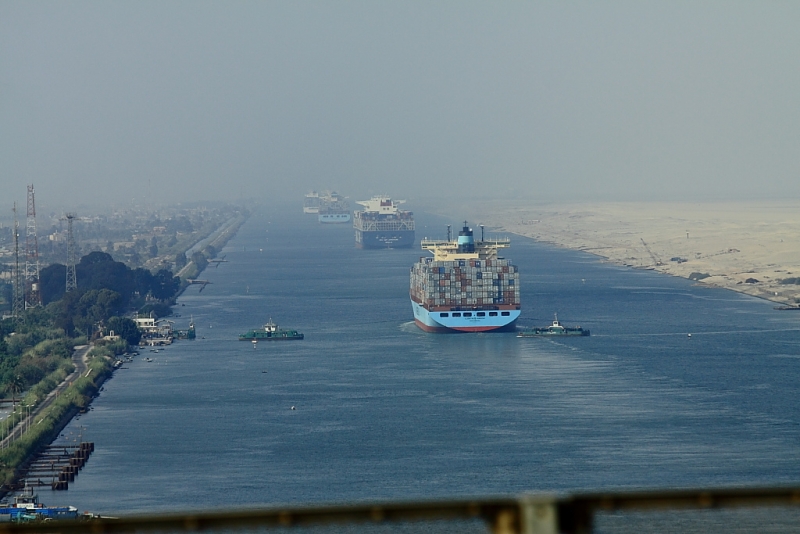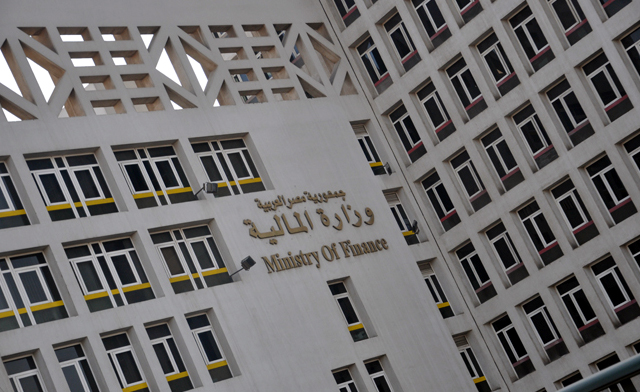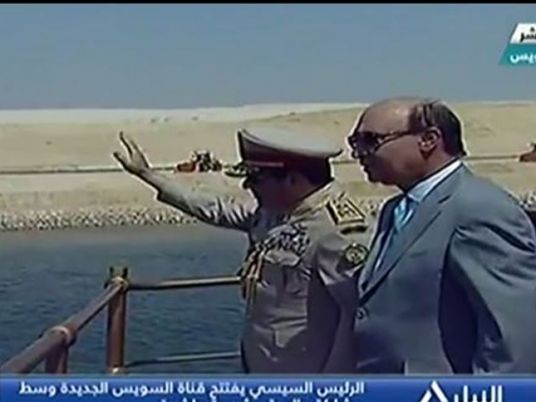Some people belittle the new Suez Canal project, saying that it is merely a small channel not longer than 15 km. And in the absence of feasibility studies for the project, I decided to make a study of my own.
I believe that trying to belittle the project is a bit misleading because it was declared from the first day that the project includes digging a 35-km channel, deepening and widening 30 kilometers of the Bitter Lakes and deepening and widening seven kilometers of the Ballah branch. In other words, the total is 72 kilometers.
To check this, you can click on the following links on google:
Drilling new channel path 35 km
But the project is larger than just this in terms of the short and long-term economic returns if compared to other priorities.
The following information is needed if we want to speak about this:
1 – There are 49 ships on average that pass through the canal every day, while the total capacity of the canal is 76 ships.
2 – The maximum depth allowed for a ship is 22 meters, and the maximum deadweight permitted is 240,000 tons.
3 – The existing canal can take 64 percent of types of oil tankers, 96.8 percent of types of bulk carriers and 100 percent of the rest of ship types. In other words, the deepening and widening would only help increase the number of large oil tankers, as the other types of ships can pass anyway.
There are two types of giant oil tankers, namely the VLCC (Very Large Crude Carrier) and the ULCC (Ultra Large Crude Carrier).
The existing canal cannot take the ULCC because it needs a depth of 35 meters as well as ports with special peers. They take the Cape of Good Hope.
As to the VLCC, which needs a depth of 21 to 28 meters, the large type of it unloads the oil into the Sumed Pipeline and takes it back at the Sidi Kerir Port, which costs more and takes more time.
The stated objectives of the project are as follows:
1 – To reduce waiting and increase headway, as traffic in 2023 is expected to reach 97 ships per day.
2 – To deepen the channel to 24 meters in order to accommodate more VLCC tankers (ships must cruise 2 to 4 meters above the bottom of the channel).
3 – The undeclared objective of countering the Israeli 350-km Med-Red railway line between the port of Eilat on the Red Sea and the port of Ashdod on the Mediterranean.
If we look at the traffic in the canal in the last five years, we will find that it has dropped from 17,993 ships in 2010 to 17,148 ships in 2014, whereas the average tonnage has increased from 47,000 tons in 2010 to 57,000 tons in 2014. This means that the deepening of the channel is important to attract large tankers.
And if the deepening would raise the number of VLCC tankers from 73 tankers to 220 tankers, with an average load of 250,000 tons, this would increase the annual revenue from $5,405 billion to $5,610 billion, up $205 million per year.
But reducing the waiting or transit period from 18 hours to less than 11 hours is not a major advantage because the canal is shorter than the Cape of Good Hope route by 10 days. In other words, the seven hours saved from the transit time would really make no difference.
As to the Israeli railway line, it does not really threaten the Suez Canal for the following reasons:
1 – It would only transport containers, not liquid material like oil or gas. And containers amount for only 30 percent of the total load that passes through the Suez Canal.
2 – There are 32 million containers that pass through the canal every year, while the maximum capacity of the Israeli line is 150,000 containers per year, which is 0.5 percent of the canal’s capacity.
3 – Unloading and transporting shipments via Eilat may take 21 days and cost $1,000 per container, while it takes 14 hours to cross the canal at a cost of $30 per container.
4 – The project has been under study since the time of Ben-Gurion and has not yet seen the light because it is economically unfeasible.
As to increasing the number of ships to 97 ships in 2023, this would be the result of a growing trade volume to and from Europe, which is already starting slowly now.
From all this we can deduct the following:
1 – We will not start benefiting from increasing the number of ships before five years from now, which means we can postpone the project until then and concentrate on other priorities.
2 – The short-term gain from the deepening of the waterway would increase revenues by not more than 4 percent.
3 – Although it is indeed a giant project that was ordered to be completed in one year rather than three years as was projected for it, perhaps we could have sufficed with the deepening of the waterway, which would yield short-term gains, and directed our investments to other more urgent projects in energy, education, health or even the logistics hub of the canal.
But it is clear that government has different priorities in the form of unstudied national projects for purposes of media hypes. This should not be done in a bankrupt country like ours. It could be done in a rich country like the UAE.
This reminds me of the story of the man who had 10 kids and begged for money to send his eldest son to study at Harvard and left the others hungry.
Goodwill is not enough. Projects like this should be put forward to a societal dialogue and a parliament to discuss them thoroughly.
I hope I am wrong.
Edited translation from Al-Masry Al-Youm




